Anna Quaglia/iStock/GettyImages
Muffin recipes typically call for all-purpose flour. While this is readily available in local grocery stores, there may come a time you cannot use all-purpose flour in your recipe. The flour in muffins adds volume; therefore, some substitutes might create a denser muffin than others.
Oats
Rolled oats are rolled into flat flakes, steamed and then lightly toasted. They offer a nutty taste and coarse texture. You can use oats in place of flour in your muffin recipes by using 1 cup of oats for every 1 cup of all-purpose flour. Since oats have no leavening capabilities, you may need to add more baking powder or baking soda. Try 1 to 2 teaspoons of leavener per 1 cup of oats. Your muffins may have a gummier texture than if you used flour.
Wheat Germ
Wheat germ, which is made from the edible part of a wheat kernel, has a dry, flour-like consistency. It’s rich in nutrients, including potassium and iron, and has a good deal of protein, too. You cannot substitute wheat germ for all of the all-purpose flour in muffins, but you can replace up to a third of the total amount of flour with it. For example, for every 1 cup of flour called for in the recipe, use 2/3 cup all-purpose flour and 1/3 cup wheat germ.
Non-Wheat Flours
For those who need a gluten-free muffin, you can use non-wheat flours instead of wheat-based flours. All-purpose gluten-free flour mixes are available in most grocery stores and health food stores, and they are used in equal proportion to all-purpose wheat flour. You can also use ¾ cup rice flour and 2 ½ teaspoons of baking powder for every 1 cup of all-purpose flour. Your muffins will have a crumbly texture, because rice flour absorbs moisture faster than all-purpose flour. Other non-wheat flours can also be used, but these require a mixture of non-wheat and wheat flours; therefore, they are not recommended for gluten-free recipes. If you’re not making a gluten-free muffin, mix in ¼ cup soy flour plus ¾ cup white flour for every 1 cup all-purpose flour.
Other Wheat Flours
Cake flour can be used in place of all-purpose flour, but because it has a lighter texture you’ll need to use 1 cup and 2 tablespoons of cake flour for every 1 cup of all-purpose flour. Self-rising flour can be used cup for cup in your recipes, but you’ll need to omit your leavening agents and salt from the muffin recipe. Other wheat flours produce a similar texture to all-purpose flour.
Related Articles

Substitutes for White Sugar in a Cake
How Many Calories are in Pistachio ...

Can I Substitute Rolled Oats for Flour ...
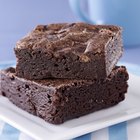
How to Replace Ingredients to Make ...
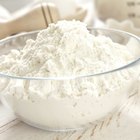
How to Use Millet Flour
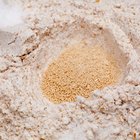
Healthy Cake Mix Substitute

Does Unbleached Bread Flour Make ...
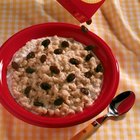
How Many Calories Do Oats Contain?
What Can I Use As a Sugar Substitute ...
Cooking With Wheat Vs. White Flour

Can I Use Rolled Oats in Place of ...

How to Replace Eggs With Applesauce, ...

How to Cook Light With Bananas
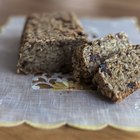
Gluten-Free Bread Without Eggs
Can You Substitute Whole-Wheat Pastry ...

How to Use Xanthan Gum in Baking
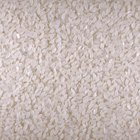
How to Bake With Rice & Potato Flours

Can You Make a Boxed Cake Without ...

What Would You Use Coconut Flour In?

Can You Substitute Vegetable Shortening ...
References
Writer Bio
Shailynn Krow began writing professionally in 2002. She has contributed articles on food, weddings, travel, human resources/management and parenting to numerous online and offline publications. Krow holds a Bachelor of Science in psychology from the University of California, Los Angeles and an Associate of Science in pastry arts from the International Culinary Institute of America.